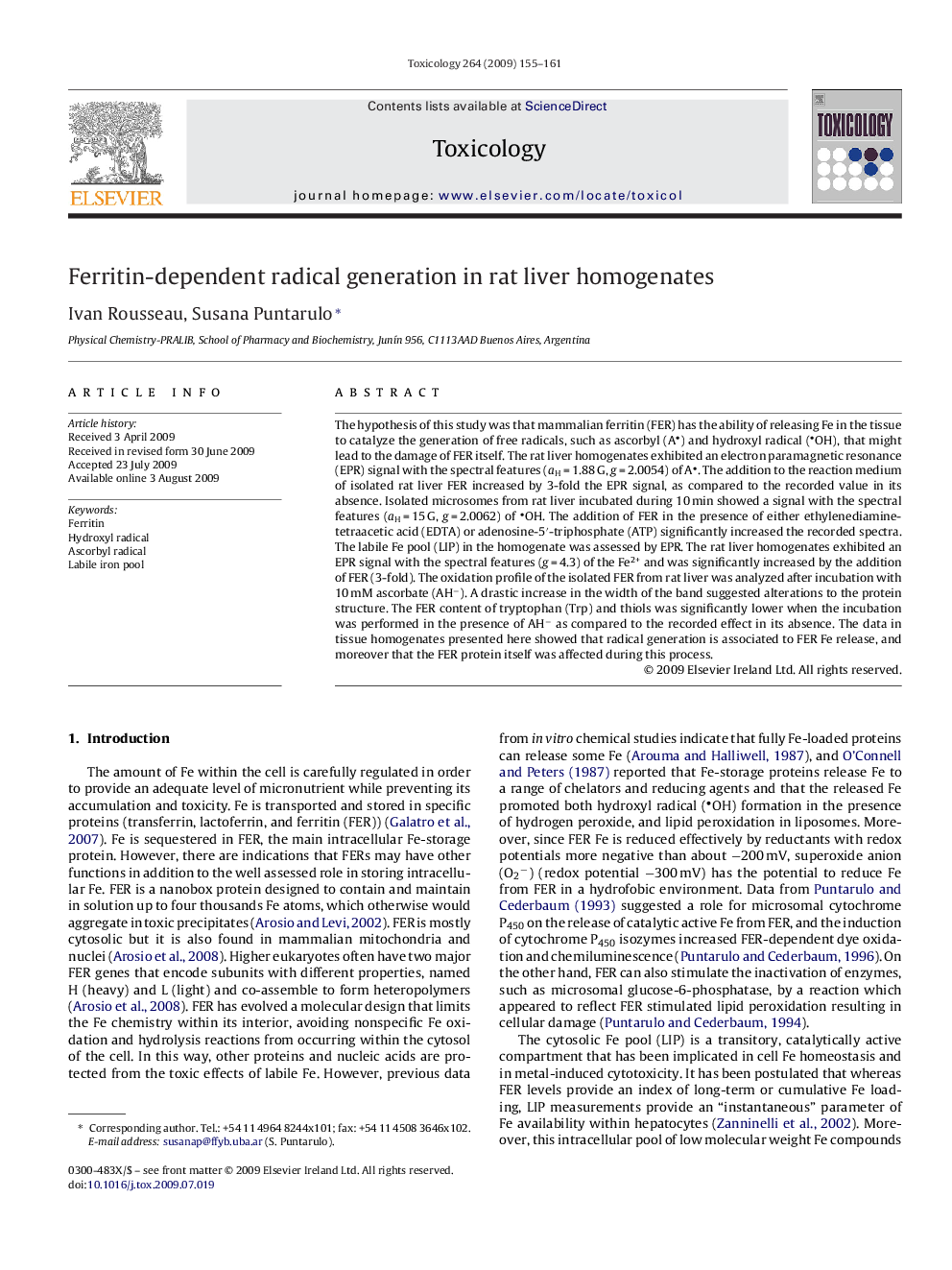| کد مقاله | کد نشریه | سال انتشار | مقاله انگلیسی | نسخه تمام متن |
|---|---|---|---|---|
| 2596372 | 1132525 | 2009 | 7 صفحه PDF | دانلود رایگان |

The hypothesis of this study was that mammalian ferritin (FER) has the ability of releasing Fe in the tissue to catalyze the generation of free radicals, such as ascorbyl (A) and hydroxyl radical (OH), that might lead to the damage of FER itself. The rat liver homogenates exhibited an electron paramagnetic resonance (EPR) signal with the spectral features (aH = 1.88 G, g = 2.0054) of A. The addition to the reaction medium of isolated rat liver FER increased by 3-fold the EPR signal, as compared to the recorded value in its absence. Isolated microsomes from rat liver incubated during 10 min showed a signal with the spectral features (aH = 15 G, g = 2.0062) of OH. The addition of FER in the presence of either ethylenediamine-tetraacetic acid (EDTA) or adenosine-5′-triphosphate (ATP) significantly increased the recorded spectra. The labile Fe pool (LIP) in the homogenate was assessed by EPR. The rat liver homogenates exhibited an EPR signal with the spectral features (g = 4.3) of the Fe2+ and was significantly increased by the addition of FER (3-fold). The oxidation profile of the isolated FER from rat liver was analyzed after incubation with 10 mM ascorbate (AH−). A drastic increase in the width of the band suggested alterations to the protein structure. The FER content of tryptophan (Trp) and thiols was significantly lower when the incubation was performed in the presence of AH− as compared to the recorded effect in its absence. The data in tissue homogenates presented here showed that radical generation is associated to FER Fe release, and moreover that the FER protein itself was affected during this process.
Journal: Toxicology - Volume 264, Issue 3, 29 October 2009, Pages 155–161